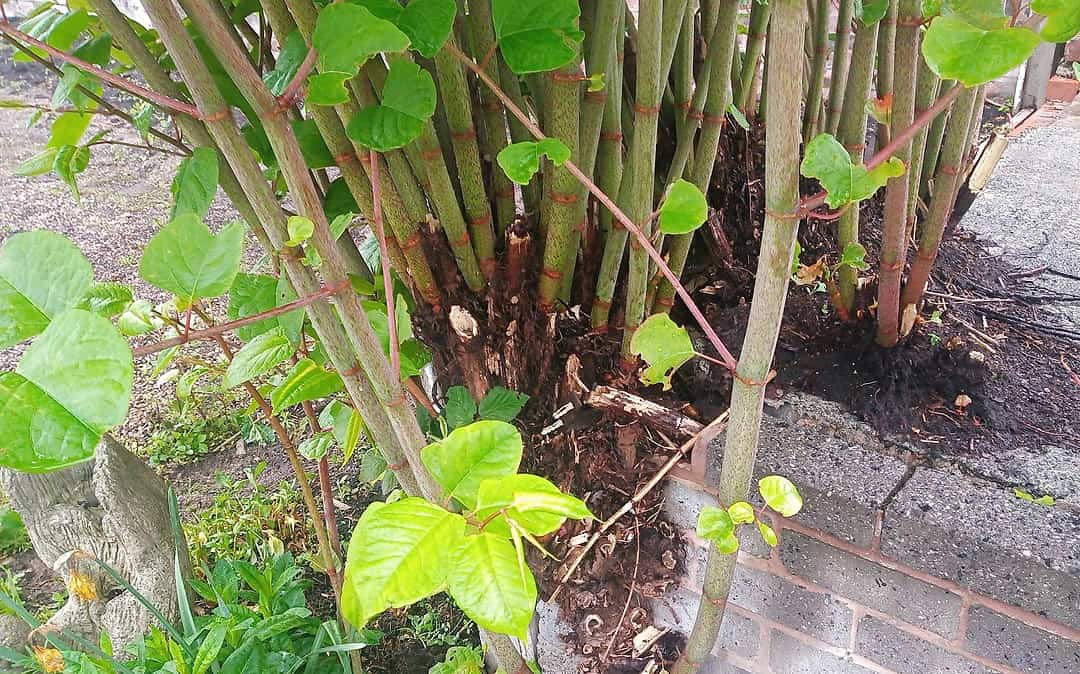Guidance for Japanese knotweed [2023]
Get the latest guidance on managing Japanese knotweed in the UK.
Discover the best control methods, including physical removal, chemical treatment, and herbicides. Learn about the responsibilities of property owners to prevent the spread of this invasive species, and the laws and regulations governing its control and management
Japanese knotweed is a highly invasive plant species that was originally brought to the UK as an ornamental plant in the 19th century. It can now be found in many parts of the country and is considered one of the most invasive non-native species in the UK.
The plant has a rapid growth rate and can cause significant damage to buildings, infrastructure and the environment. Its roots can grow up to 3 meters deep and damage foundations, walls and buildings. The plant also outcompetes native vegetation, leading to a decline in biodiversity.
To control the spread of Japanese knotweed, the UK government has made it illegal to plant the species in the wild. Property owners have a responsibility to prevent it from spreading to neighbou ring properties and are encouraged to seek professional help for its removal and treatment.
There are several methods for removing Japanese knotweed, including physical removal, chemical treatment, and the use of herbicides. However, it is important to note that the plant can be difficult to remove and may require several years of treatment and monitoring to effectively control it.
In conclusion, Japanese knotweed is considered a serious problem in the UK and it is important to control and prevent its spread to protect the environment and infrastructure. Professional help is recommended for its removal and treatment
In the UK, finding Japanese knotweed in your garden can affect the sale of your house due to its fast growth, strength, and the difficulty of eradicating it completely. It can cause damage to property structures and decrease the value of your property. Here is some guidance on what to do if you find Japanese knotweed in your garden when you’re looking to sell your house:
- Identification: First, accurately identify the plant to ensure it is indeed Japanese knotweed. It has bamboo-like stems, large heart or spade-shaped leaves, and it forms dense clumps. It flowers in late summer and early autumn.
- Professional Assessment: Consider hiring a professional to assess the situation. An expert can provide a management plan and treatment options. They can also provide an official report that might be necessary for mortgage lenders or potential buyers.
- Inform Potential Buyers: You are legally obligated to inform potential buyers if your property is affected by Japanese knotweed. This is usually done through the TA6 property information form where you must declare if your property is affected by Japanese knotweed.
- Treatment Plan: You can choose between several treatment options, including chemical treatment, excavation, or a combination of both. Chemical treatment is less expensive but can take several years to be effective. Excavation is quicker but significantly more costly.
- Insurance-Backed Guarantees: Look for a professional service that offers an insurance-backed guarantee on their work. This can be very reassuring to potential buyers and mortgage lenders, as it provides assurance that the treatment plan is underwritten by an insurance policy.
- Legal Advice: It might be worth consulting a legal advisor to understand the implications for the property sale and any potential liability you might have after the sale is completed.
- Continuous Monitoring: Even after treatment, the site will need monitoring for several years to ensure the knotweed does not return. This should be part of the management plan provided by professionals.
By taking these steps, you can manage the issue and minimize its impact on your property sale. However, the presence of Japanese knotweed can still affect the sale process, including the valuation and the willingness of lenders to provide mortgages to potential buyers. Therefore, dealing with the problem effectively and transparently is crucial.
